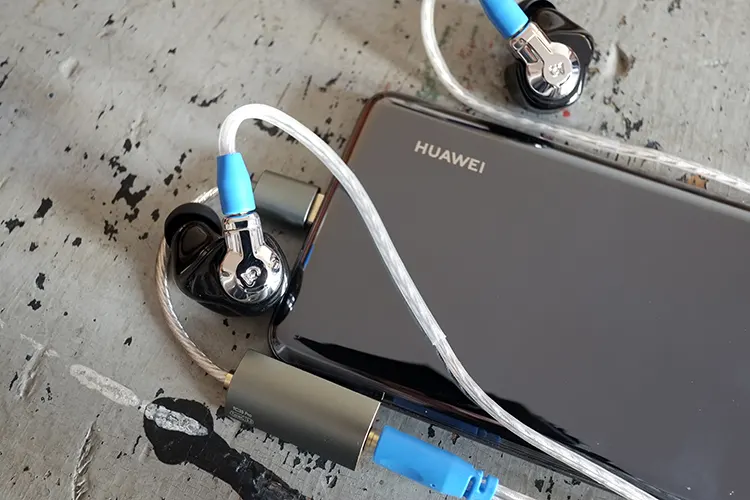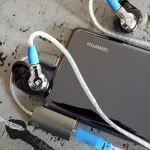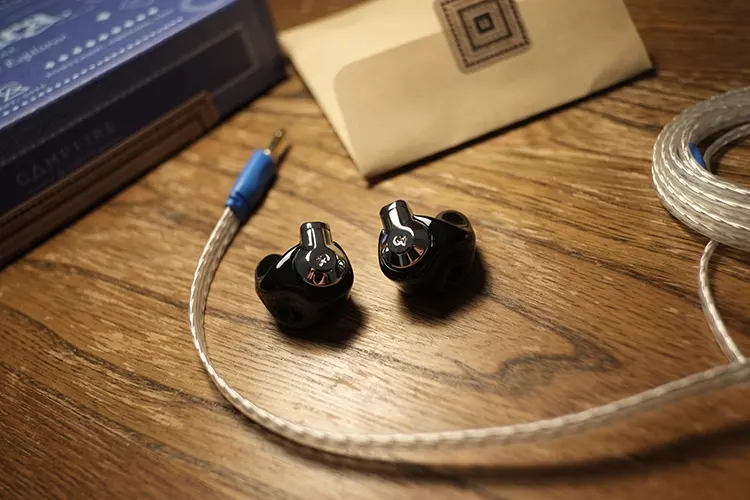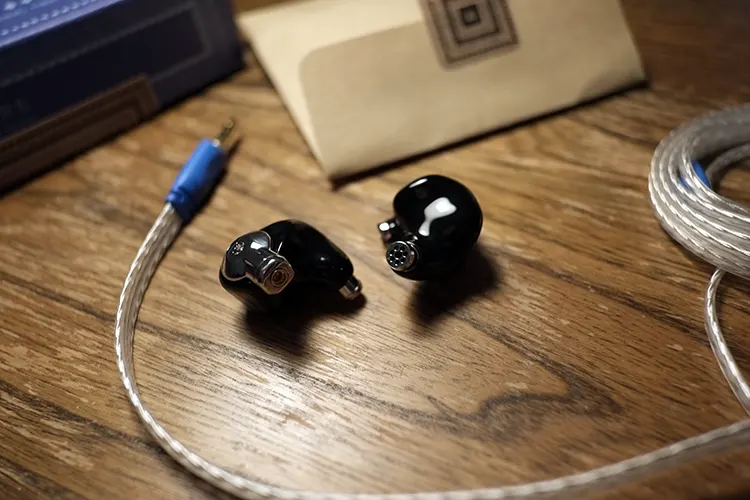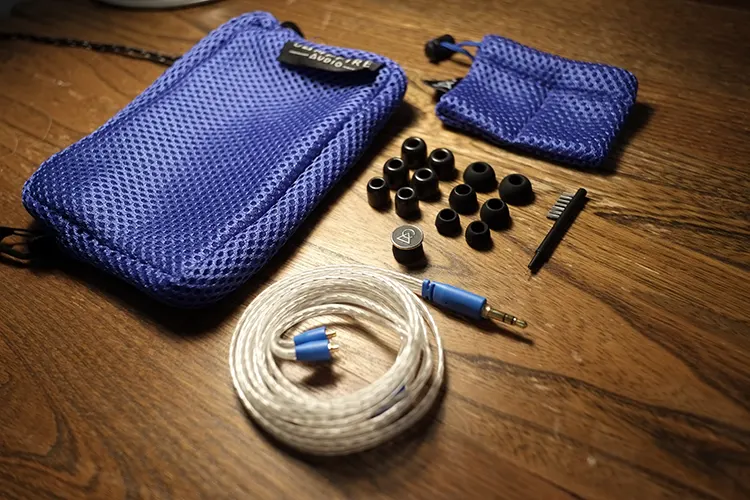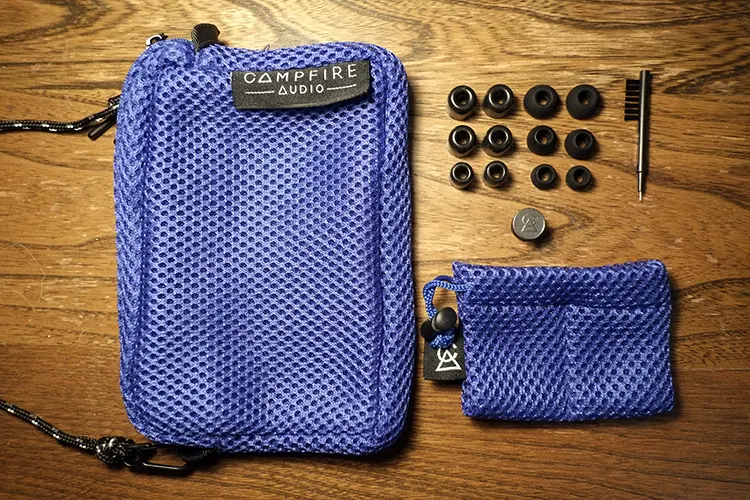Today, Thomas reviews the Campfire Audio Cascara, which is a new 10mm dual magnetic dynamic driver universal in-ear monitor from their Chromatic Series. It is priced at $499.
Disclaimer: This sample unit was sent to me in exchange for our honest opinion. Headfonics is an independent website with no affiliate links or services. I thank the team at Campfire Audio for their support.
Click here to read more about Campfire Audio products we previously covered on Headfonics.
Note that this article follows our current scoring guidelines which you can read in more detail here.
Late last year, Campfire Audio released a new lineup of IEMs under the Chromatic Series moniker.
Along with the armature-only Ponderosa, planar-equipped Supermoon, and hybrid Bonneville, we have the most affordable offering, the single dynamic driver Cascara. While the baby of the bunch, it shares a striking resemblance to its more premium-priced peers.
Along with unique driver layouts for each model, the Chromatic Series has a couple of other treats in store for prospective buyers. Customization is a key aspect of this line of earphones, letting you choose everything from the depth of your accessory kit to your preferred style of shell, be it custom or universal.
Like the Vega 2020 before it, the Cascara contains a 10mm, full-range dynamic driver. The Cascara swaps out the Vega 2020’s ADLC (amorphous diamond-like carbon) unit for a newly developed dual-magnet design.
Shared between the two models is hyper-engaging, ear-drum-shattering bass. The Cascara provides a sweeter mid-range though, making it one of the more well-rounded, bass-focused models I’ve heard from the brand.
Tech Highlights
The Cascara isn’t laden with as much tech as other earphones in Campfire Audio’s lineup. I suppose a simple full-range, single dynamic configuration doesn’t demand the same amount of tuning trickery to achieve engaging sound.
Speaking of the driver, the Dual-Magnet Dynamic Driver used in the Cascara has been newly developed by Campfire Audio.
The enhanced magnetic field provided in this new driver is intended to be more efficient, improve the transient response performance, and allow the driver to move more precisely than units found in past products.
As part of the function of Campfire Audio’s “Solid-Body Design”, the driver is built into a 3D-printed ‘engine block’ that uses physical design to tune the sound and route it to your ears.
Since the driver is integral to the design and build of the shell, it also functions to improve the structural rigidity and remove potential failure points.
Design
The universal shell design of the Chromatic Series is based on averaging thousands of ear impressions Campfire Audio has received over the years. Despite being the entry-level model of this new series, the Cascara’s ergonomic shape has benefited from this approach to shell design.
The 3D-printed acrylic shell is extremely smooth and well-contoured, and when fitted does a great job of filling the outer ear thanks to a larger-than-average size.
The plain black acrylic, or blue if you opted for that colorway, is contrasted by a vented, hand-polished, stainless-steel backing, and stainless-steel nozzles.
As with almost every other model in Campfire Audio’s lineup, their beryllium/copper MMCX ports make an appearance.
The port’s sidewalls are considerably thinner than on their 2020 releases though, so only time will tell if durability remains as impressive as I have come to expect.
As with other models in the Chromatic Series, the low-profile, custom-inspired design is a departure from Campfire Audio’s past products.
The stainless-steel accents, while easily scratched, ensure the Cascara honors the brand’s heritage, harkening back to past models like the Comet, Atlas, and Andromeda S.
Comfort & Isolation
The Cascara’s custom-like shells offer a tailored fit for the average ear. Passive isolation is good, but not great, falling short of the highly isolating properties of its stablemate, the Ponderosa.
The design of the Cascara’s earpieces is the result of averaging thousands of ear impressions. As such, they feel lovely to wear for long periods, though not without some concessions.
The shells are on the large side which will limit who they can fit. On the other hand, the size helps to disperse the weight of the cable and earphones evenly because they fill the outer ear so completely.
The smooth curves ensure there are no hotspots to cause pain and fatigue, and the cable doesn’t throw off the balance to ruin a reliable seal.
Their effectiveness in filling the outer ear also has the benefit of naturally blocking the entry of unwanted outside noise, a trait countered by using a dynamic driver and public-facing vents.
Taking the Cascara to my local coffee shop, I found it was necessary to bump the volume a couple of notches to maintain a clear listening experience. Pausing the music, I could both follow and hold a conversation with the earpieces still in, albeit with some difficulty.
The Cascara won’t separate you from your surroundings, but the isolation it provides is decent if not mostly average, and in line with other vented dynamic-driver-based earphones. It can also be improved marginally when fitted with Campfire Audio’s included Mushroom foam tips.
Tips
The Cascara comes with a generic set of silicone tips that multi-IEM purchasers will likely have seen countless times before. Campfire Audio knows what they’re doing though, and they work well with the Cascara.
The stock tips have quite a wide bore and moderate material stiffness which helps manage the large quantities of bass on offer.
Swapping over to something with a small bore and softer silicone, such as SpinFit CP100, Final Type E, or Sony Hybrid, overemphasizes the Cascara’s midbass and warms up the sound too much.
If you are looking for a higher-quality alternative to the stock tips, JVC’s standard replacement tips are an affordable alternative. You could also refer to their Spiral Dot lineup for a more premium version.
If you require a deeper fit than what the stock tips provide, the SpinFit CP145 is another worthy contender. They have a wide bore with a long, flexible shaft for deeper insertion, and do little to alter the sound from the stock set.
For a variety of reasons, namely wax buildup, and inconvenience, I rarely use foam tips and as such have no comments on, nor recommended alternatives to, Campfire Audio’s own Mushroom tips.
Stock Cable
Like all models in the Chromatic Series, the Cascara comes with Campfire Audio’s new Time Stream cable.
It uses a flat, wide, quad-strand, ribbon-style design reminiscent of premium loudspeaker cables, like those from Nordost. Within the non-migratory PVC jacket are enameled silver-plated copper wires with 8 conductors per strand.
The flat design and smooth sheath ensure the cable slides smoothly against your clothing. This is especially welcome for someone who wears the cable under their shirt like I do, as it remains hidden and unobtrusive.
Cable hardware is chunky rubber with minimal, but effective strain relief at the straight jack. The MMCX plugs and y-split are not relieved, but the cable is thick enough for that not to be a worry.
Campfire Audio did buyers right by including a useful chin cinch, and preformed ear guides instead of memory wire. The sample provided was terminated in a standard, single-ended 3.5mm jack, though 2.5mm and 4.4mm balanced options are also available.
As part of the customizable nature of this line of products, you can choose the color of the cable hardware. The blue my sample was shipped with looks great, though black is also available if you want something more subtle.
Microphonics are kept in check, though the pre-formed guides can cause some unwanted noise. The chin cinch helps deal with this but does not eliminate it.
It is important to note that the Time Stream cable is heavier than past stock cables from the brand. If you prefer something thin and light, their classic Smoky Litz cable is still your best bet.
An all-metal version of the Time Stream cable is available, but it cannot be optioned with the Cascara. You’d need to pick that up separately if you want the more premium hardware it contains.
Packaging & Accessories
With the Essential accessory kit, the Cascara shows up in a squat, wide cardboard box.
The product specifications and details are stylistically placed along every aspect of the box, inside and out, making it one of the more visually interesting packages I’ve seen from Campfire Audio.
Along with the Cascara earpieces, you get the Time Stream Cable which we covered earlier, a Breezy Bag, a Breezy Bag Micro, a cleaning tool, a Campfire Audio pin, as well as silicone and Marshmallow foam tips in small, medium, and large sizes.
My sample also included a cleaning cloth which isn’t noted anywhere as an included accessory.
If you opt for the Deluxe accessories, you get a leather case instead of the Breezy Bag, a cushioned cable bag, three Time Stream cables in different terminations, along with the Breezy Bag micro, silicone, and foam tips, pin, and cleaning tool from the Essential kit.
I love the new packaging design, but it would be nice to see Campfire Audio move to a swappable termination design for their cables. It would save considerable wear and tear on the MMCX ports if you routinely switch between single-ended and balanced options.
Click on page 2 below for my sound impressions and recommended pairings.

